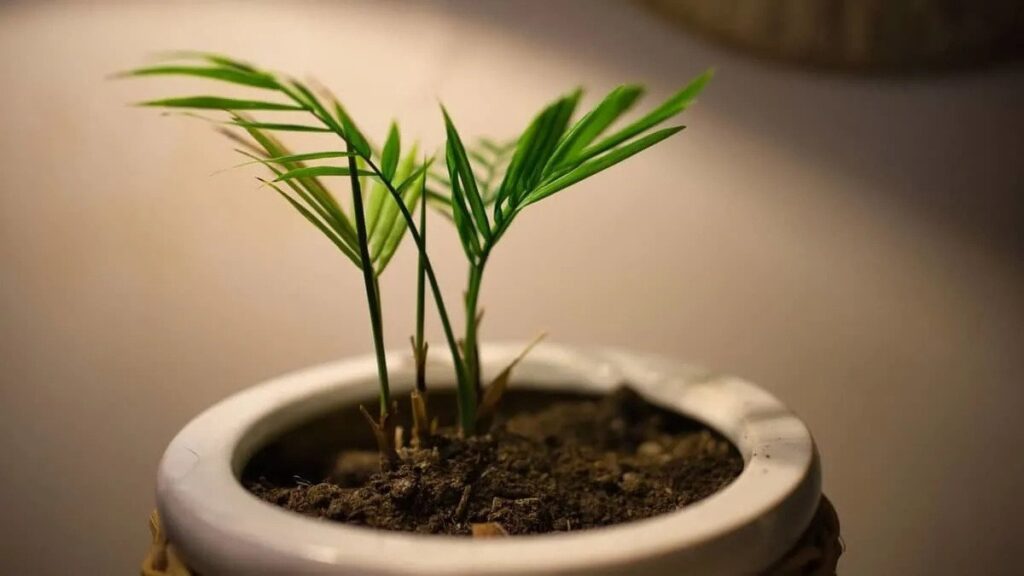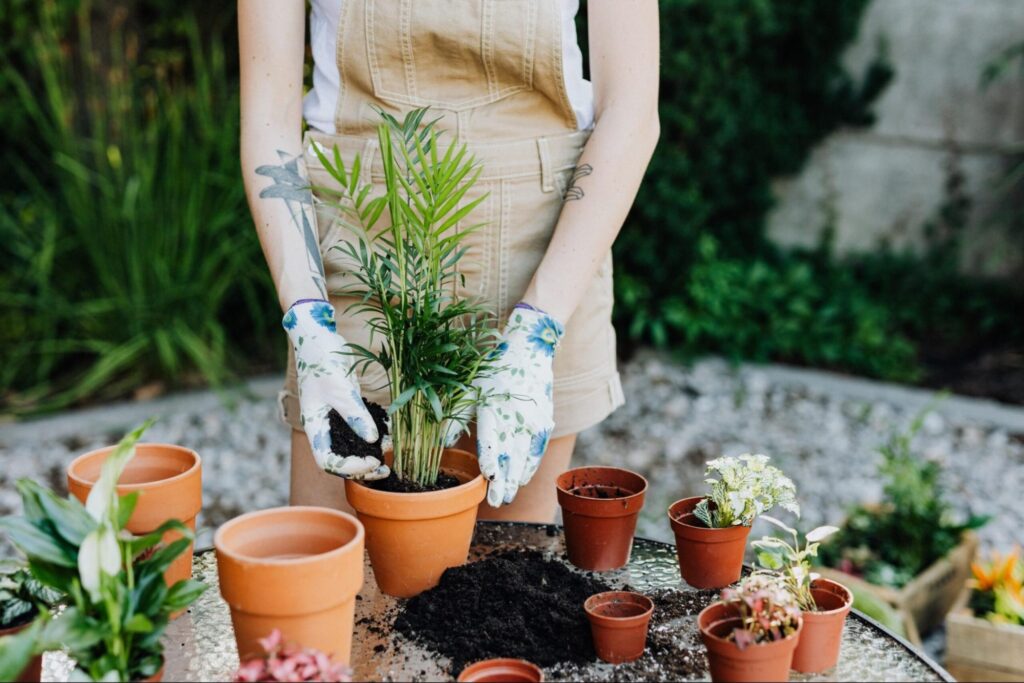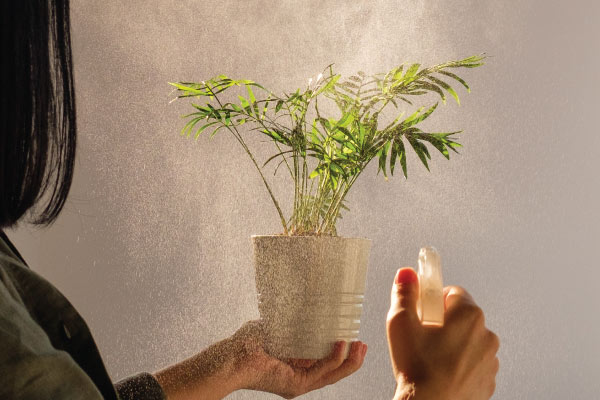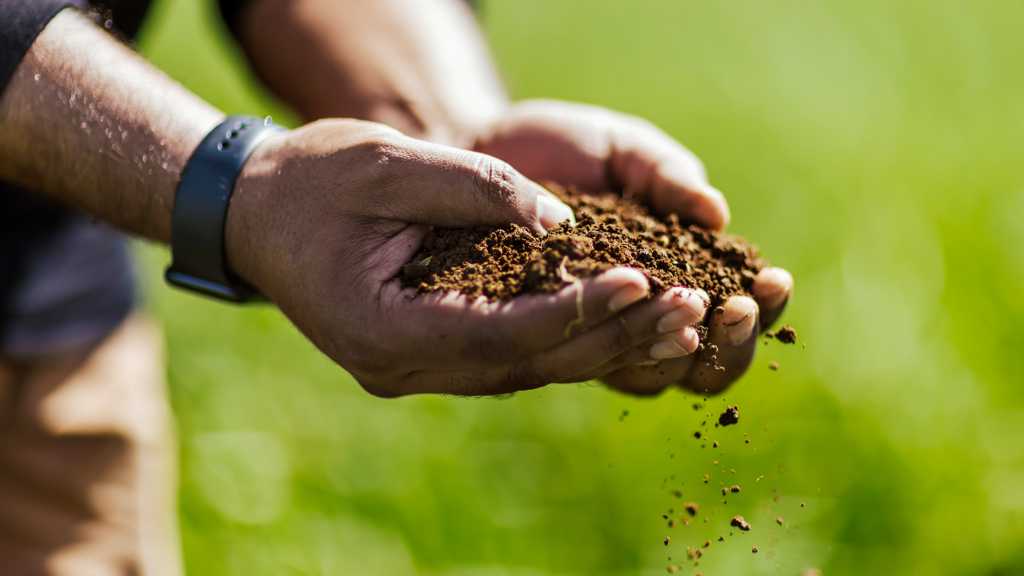Are you planning to fertilize your Areca palm but don’t know when and how to fertilize it?
We can understand that these plants grow very slowly and are best planted in the spring for better growth. Areca palms are one of the best plants to be grown if you want a tropical vibe around your house.
But sometimes the plant growth stops and the leaves begin to change color because they stop receiving proper light, water, and nutrients.
So, in this article, we will tell you everything you need to know about Areca palms and how to boost their growth through fertilizers. But let us first understand the role of fertilizers for areca palms!
The role of fertilizers for Areca Palms

Any plant requires fertilizers for nourished growth. They give the plant essential elements that are missing from ordinary soil, like potassium, nitrogen, and phosphorus. These nutrients are crucial for the plant’s growth and development. Since they get everything they need from the soil, outdoor plants don’t need fertilizers, but indoor plants do, hence fertilizers should be utilized.
Fertilizer will increase the nutritional levels in the soil, allowing the plants to access the elements for healthy, strong development, whether you’ve planted in containers or outdoors. In the appropriate ratios for the desired plants, commercial fertilizers blend macronutrients with a few micronutrients to give the plant all the necessary minerals.
There are many different types of fertilizers, including liquid, solid, and water. To prevent overfertilization and ensure precise fertilization, the majority of indoor plants typically utilize water soluble fertilizers. They can also be buried in the soil as dry pebbles, which break down gradually over time as the plants are watered. Although they typically don’t have enough nutritional concentrations to compensate for container leaching, organic materials can also be utilized as fertilizer and are highly beneficial to the growth of the plant.
How and when to fertilize the Areca Palm?

Now you have to understand what is the role of fertilizers in the life of areca palm plants. So let’s explore how and when we can use the fertilizers for the areca palms.
Usually, fertilizer is used on the plants during the summers to the spring season. Fertilizing the palm at this time boosts their growth because this period is said to be their growing season. They give the plants the required nutrients and minerals to develop healthily.
Fertilizing the plant is essential not only for the plant but also for the soil it grows in. The indoor plant soil does not have many nutrients compared to the outdoor soil to compensate that fertilizers help a lot in the areca palm’s development.
When to apply the fertilizer depends on which type of fertilizer you use for your plant and also plant requirements matter. You should decide on how much concentration should be present in the fertilizing soluble to avoid the plant from being damaged or overfertilized. Generally, it is applied only once per season as the slow-release fertilizers gradually break down over time to deliver nutrients needed by the plant.
You can use liquid fertilizers for indoor areca palm plants once every four weeks while watering the plant. They usually contain nutrients in lower quantities because they are intended for use in containers and to prevent the buildup of salts in the soil, which can harm the roots. Remember to always be careful while applying the solution to the plant to prevent any overfertilization.
The two main aspects you should always remember while fertilizing the areca palm plants are that you should use only the required amount of fertilizer, and the second is to check both the soil and the pot to have a very good drainage capacity for healthy plants development.
How to apply fertilizer to Areca Palms?

A plant’s development depends on which fertilizer you choose. When you water the soil using the water-soluble solutions that are diluted in water before being applied to the soil. To release nutrients when you water the plant, fertilizer granules should be sprinkled over the top layer of soil and gently mixed.
Spraying instructions will vary depending on the type of fertilizer you use. To protect the plant, strictly adhere to these directions. More nutrients do not necessarily result in more growth, instead, they will probably burn the roots or cause an imbalance in the nutrients. Be careful while applying the fertilizers to the plant to prevent it from any harm.
How to identify if Areca Palm is lacking nutrients?
Areca palms generally develop slowly. So when the leaves may turn yellow with uneven or patchy patterns it can be due to nutrient imbalance or nutrient insufficiency in the Areca Palm plants. During their growing season, which is between spring and summer, if you find that the plant is not growing or producing leaves it indicates a lack of fertilization.
Keep in mind that as the soil degrades over time, nutrients progressively drain from the soil. There won’t be any more nutrients available for the plant to survive once it has consumed all of the soil’s nutrients leading the plant to wilt away gradually. Another prominent sign is when your Areca Palms need repotting because of being kept in the same container for a long period.
A clue that the plant needs to be repotted is when the roots start to protrude from the container because there isn’t enough room within, or when the roots start to make holes in the pot to find space to spread out and expand. Because if the plant is not routinely replanted, it will consume all the nutrients in the soil while also running out of room for the growing roots to absorb any minerals from the soil. The areca palm will soon begin to gently wither away, revealing the effects of the plant’s lack of nutrition.
Signs of Over-Fertilization on Areca palm:
Brown tips of the leaves may be the foremost red flag you will notice on an over-fertilized areca palm, an assuring indication that you have over-fed your tree. This sign, along with a crusty fertilizer that remains on the soil’s upper texture, indicates you’ve been a bit too abundant with the nutrient application. Overdoing it with the nutrient can lead to stunted growth and burns all over the plant, as the plant struggles with a bunch of salts in the soil.
Identifying Over-Fertilization
Yellowing leaves, especially forming at the tips and edges, are a denoting signal of nutrient excess. If your Areca Palm’s leaves are falling like flies before the dormancy span, it’s the moment to dial back on the fertilizer. Root burn can also appear, concealed under the soil, where the roots may become harmed due to high concentrations of fertilizer.
What measures to take after over-fertilizing areca palm:
Did you notice any signs of over-fertilization that I mentioned above? Re-potting undoubtedly would be your best stake to cure the plant. Exchange the old, nutrient-accumulated soil for a new blend to give your palm a new slate. If the case isn’t alarming, just stop fertilizing and water your plant with fresh water to rinse out extra nutrients. Remember, patience is key; your areca palm may take some time to heal and bloom again.
What are the best fertilizers for Areca Palms?

An ideal fertilizer for the Areca Palm will be with higher levels of nitrogen, potassium, and lower levels of phosphorus. A nitrogen-rich fertilizer is essential for the Areca Palm plants, which are known for their lush foliage. Also, potassium is necessary for the process of photosynthesis and proper root development in the plant. To maintain the foliage and prevent the leaves from turning yellow, a good fertilizer should also contain secondary nutrients and micronutrients.
A positive interaction between nutrients and micronutrients like magnesium, manganese, phosphorus, potassium, nitrogen, boron, and iron gives an excellent outcome between them and the plant.
What are the common diseases faced by Areca Palms?
Spider mites, which like to consume the dust that gathers on the plant’s fronds when the humidity level is low, are a common problem that the Areca palm plants face. To remove them, you only need to wash the fronds properly. Mealybugs also frequently cause an issue, but they can easily be removed by washing.
Another primary problem of the areca palm is overwatering the plant, which causes root rot. To control your fertilization and prevent the plant from receiving excess water by having a proper drainage system in the pot the plant is placed in. Brown leaves are normally a symptom of excess fertilizer or dehydration. Yellow dots on the leaves can also occur.
What are the benefits of growing Areca Palms at home?
The Areca Palms act as an air purifier in your house. They clear out any toxins present in the surroundings and provide a fresh and bright environment. They also have the capability of serving as a humidifier. If you have asthma, allergies, or other respiratory issues, it can produce up to a litter of water per 24 hours, which is ideal.
Apart from health benefits, it also functions as amazing home decor. Having an areca palm in your home or office brings a vibrant and calm environment. Also, these plants are slow-growing meaning they do not need too much care and attention compared to the other plants. Provide them with enough resources to grow healthily.
Quick Tips for Fertilizing Areca Palm:
Tip 1: Spring is the most suitable period to begin fertilizing areca plants because that’s the time when they are beginning to grow vigorously. Fast-growing plants like areca palm should be fertilized more frequently than other plants that grow slowly, like a cactus, or are dormant. If your areca palm is living indoors, it will require less fertilizer than outdoor palms.
Tip 2: Always lessen the strength of your fertilizer, by that I mean dilute it. It’s more useful to under-fertilize than over-fertilize. If there is a nutrient depletion in the soil mix and you have not fertilized in a year or so, you can boost the strength by adding less water when you’re weakening the fertilizer, but make sure to use it.
Tip 3: Understand your N-P-K values. That’s the proportion of macronutrients your plant demands and what should be in your fertilizer. Areca palms react best to a fertilizer with the N-P- K proportion of 3-1-3 or 3-1-2, all in a gradually-release state, and with magnesium and micronutrients. If you don’t notice this on the fertilizer container, find another fertilizer.
Tip 4: Micronutrients are just as essential as macronutrients, plants just require less of them. Most fertilizers contain micronutrients—they’re just not predominantly shown on the front of the fertilizer package.
Tip 5: Both organic and chemical-enriched fertilizers are available in the market and both are okay to use for areca palm. It’s your call what you wanna use on your plant.
FAQ’s
Q1. What is the best fertilizer for the areca palm?
Ans. Areca palms can benefit from regular indoor plant fertilizer, but they will grow most effectively when given a special palm fertilizer that is high in nitrogen and potassium and low in phosphorus. But always remember to limit your supply of fertilizer to the plant to avoid any overfertilization.
Q2. Do areca palms need fertilizers?
Ans. Yes, areca palm needs fertilizers. Regular applications of an appropriate fertilizer will promote the fastest growth in areca palms. They might manage for a while without additional nutrients, but if not fertilized, they will eventually stop growing and wilt away.
Q3. How often should I water my areca palms?
Ans. You should check if the soil is dry before watering your plant because it’s easy to overwater your palm throughout the winter. Wait a few days and recheck if the soil is still wet at this point. In the fall and winter, you should water your Areca palm typically once or twice a week.
Conclusion
The Areca Palm needs its fair amount of fertilizers to grow, just like every other plant. Just be cautious when adding anything to the soil, especially if it’s in a container. Fluoride and chlorine can be irrigated with tap water which can cause salt accumulation. Further leading it to prevent your plants from absorbing micronutrients.
Areca palms are easy to care for with their slow growth rate. They are beautiful and pleasant to keep around the house. Also, fertilizing the plant is essential for improved and nourished growth.
We hope the above-given information was helpful to you and cleared all your doubts regarding areca palm fertilizers. If you like this article, feel free to comment down below, and also don’t forget to share it with your friends, and family!
Related Articles
- Areca Palm Dying: Why and How to Save It

- Spots On Areca Palm (White, Brown, Yellow, and Black) – Causes and How to Fix Them

- Areca Palm Leaves Turning Brown: Causes And How To Fix The Browning Leaves

- Parlor Palm vs Areca Palm: Differences You Should Know

- Areca Palm Leaves Turning Yellow: Causes and How to Fix Yellowing Leaves

- Areca Palm Diseases and Pests: Causes and How to Fix Them








